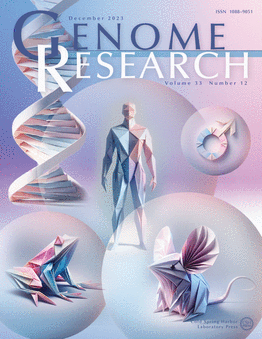Transcriptomic and proteomic effects of gene deletion are not evolutionarily conserved
IF 6.2
2区 生物学
Q1 BIOCHEMISTRY & MOLECULAR BIOLOGY
引用次数: 0
Abstract
Although the textbook definition of gene function is the effect for which the gene was selected and/or by which it is maintained, gene function is commonly inferred from the phenotypic effects of deleting the gene. Because some of the deletion effects are byproducts of other effects, they may not reflect the gene's selected-effect function. To evaluate the degree to which the phenotypic effects of gene deletion inform gene function, we compare the transcriptomic and proteomic effects of systematic gene deletions in budding yeast (Saccharomyces cerevisiae) with those effects in fission yeast (Schizosaccharomyces pombe). Despite evidence for functional conservation of orthologous genes, their deletions result in no more sharing of transcriptomic or proteomic effects than that from deleting non-orthologous genes. Because the wild-type mRNA and protein levels of orthologous genes are significantly correlated between the two yeasts and because transcriptomic effects of deleting the same gene strongly overlap between studies in the same S. cerevisiae strain by different laboratories, our observation cannot be explained by rapid evolution or large measurement error of gene expression. Analysis of transcriptomic and proteomic effects of gene deletions in multiple S. cerevisiae strains by the same laboratory reveals a high sensitivity of these effects to the genetic background, explaining why these effects are not evolutionarily conserved. Together, our results suggest that most transcriptomic and proteomic effects of gene deletion do not inform selected-effect function. This finding has important implications for assessing and/or understanding gene function, pleiotropy, and biological complexity.求助全文
约1分钟内获得全文
求助全文
来源期刊

Genome research
生物-生化与分子生物学
CiteScore
12.40
自引率
1.40%
发文量
140
审稿时长
6 months
期刊介绍:
Launched in 1995, Genome Research is an international, continuously published, peer-reviewed journal that focuses on research that provides novel insights into the genome biology of all organisms, including advances in genomic medicine.
Among the topics considered by the journal are genome structure and function, comparative genomics, molecular evolution, genome-scale quantitative and population genetics, proteomics, epigenomics, and systems biology. The journal also features exciting gene discoveries and reports of cutting-edge computational biology and high-throughput methodologies.
New data in these areas are published as research papers, or methods and resource reports that provide novel information on technologies or tools that will be of interest to a broad readership. Complete data sets are presented electronically on the journal''s web site where appropriate. The journal also provides Reviews, Perspectives, and Insight/Outlook articles, which present commentary on the latest advances published both here and elsewhere, placing such progress in its broader biological context.
 求助内容:
求助内容: 应助结果提醒方式:
应助结果提醒方式:


